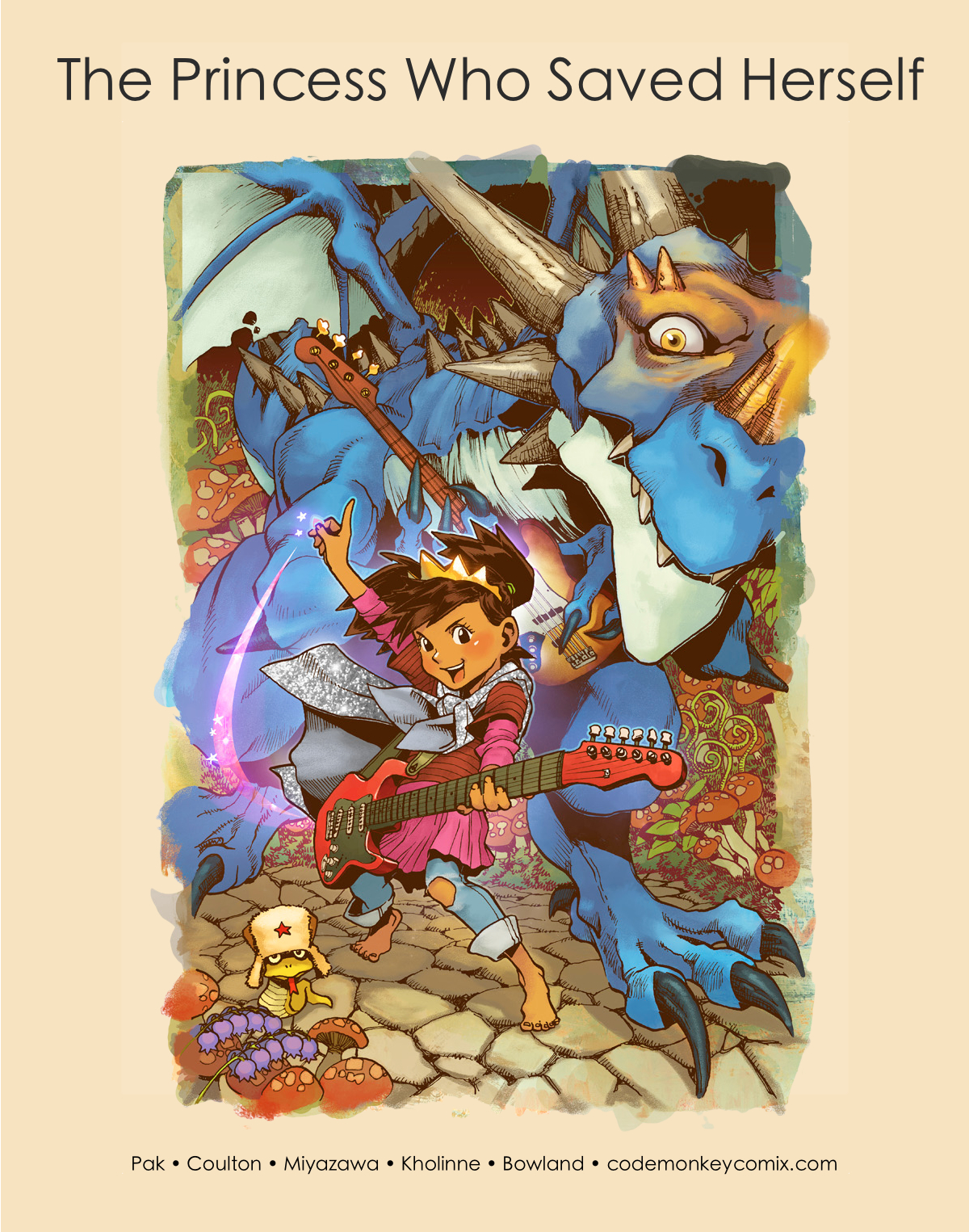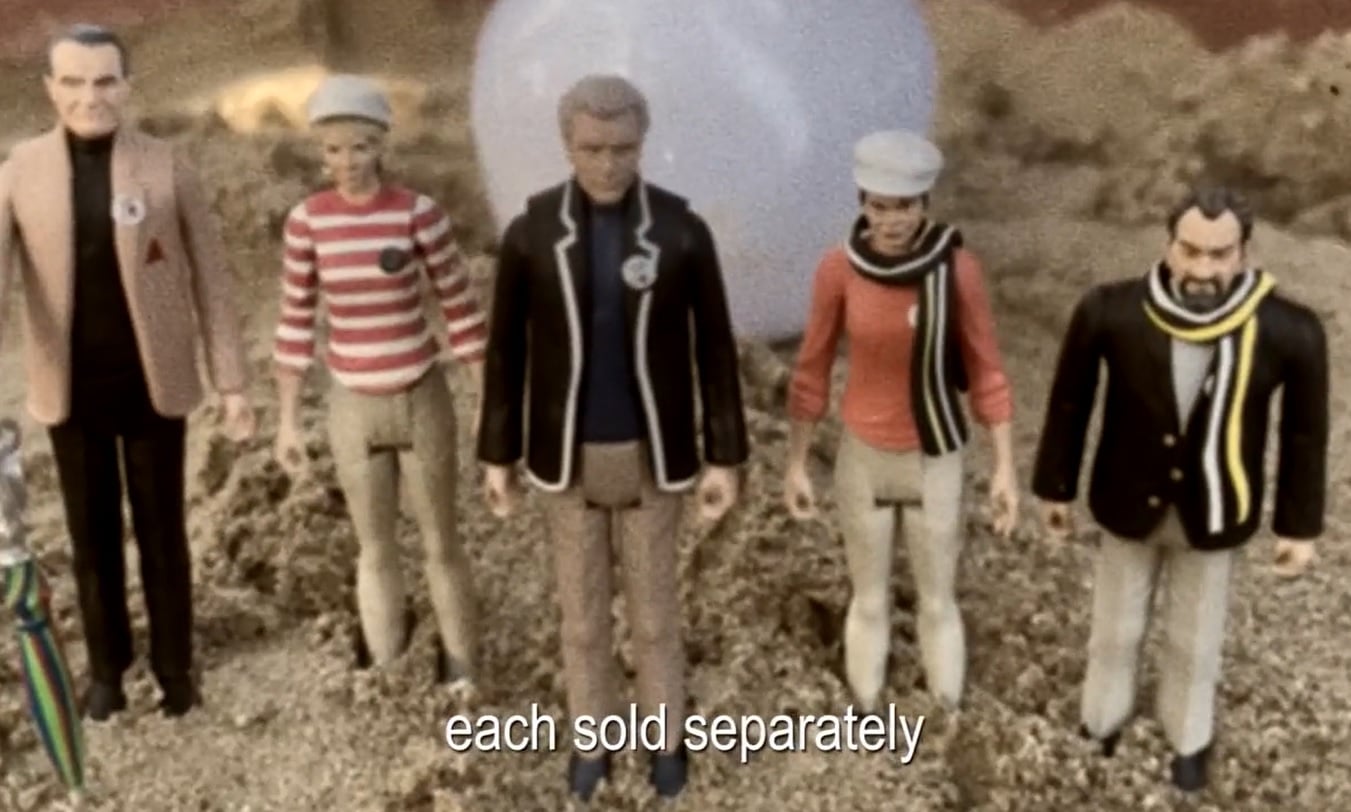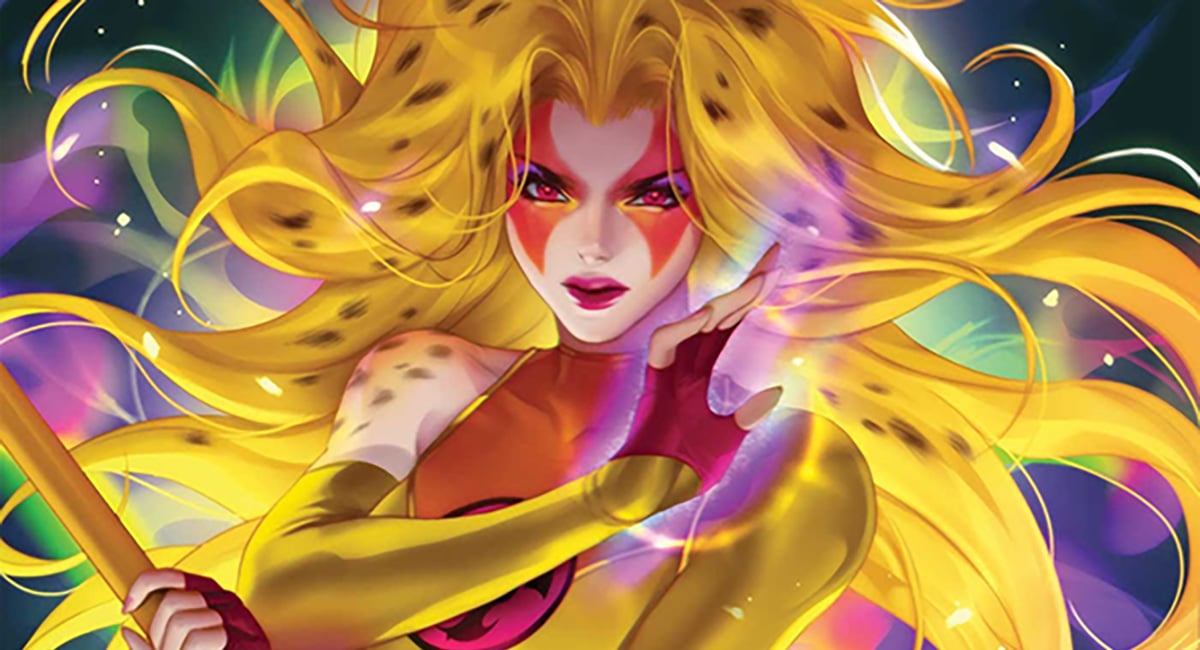The creative team behind the Code Monkey Save World Kickstarter – Greg Pak, Jonathan Coulton, Takeshi Miyazawa, Jessica Kholinne and Simon Bowland – have seen their project rocket wildly beyond the $30000 target they set for themselves. But rather than pocket the $200000 and change that they’ve raised so far, the team have been solidly building the project. Firstly, the initial 60-page book has been bumped up to 96 pages, with Fred Van Lente and Ryan Dunlavey coming onboard to create a backup story for the book. Coulton has also announced that he’ll be recording an acoustic album of all the songs featured in the novel, which will be given out to backers.
And now comes a third addition, if the Kickstarter reaches $250000 – an entirely new children’s book based around the song ‘The Princess Who Saved Herself’.
A song which lets the fairytale princess enjoy herself (rather than get captured, grow her hair, or be menaced by a spinning wheel), the book will be handled by the same creative team as the main Code Monkey graphic novel. But in order to get a better look at how they’re approaching The Princess Who Saved Herself, I spoke round robin with the creative team (writer Greg, creator Jonathan, colourist Jessica and artist Takeshi) about the new story, what it’ll be, and how they’re approaching the book.
Steve: How will the children’s book work? Will this be a straight adaptation from the song, or are you spinning it into a wider story?
Greg: “The Princess Who Saved Herself” song is kind of perfect. SPOILER ALERT: It tells the story of a tough, tomboy princess who has a snake and a red guitar. She encounters a scary dragon and a scary witch — and she recruits them for her rock band. That’s a fantastic spine for a great kids’ book — a tough little girl encounters problems and finds unexpected ways to make her way through the world.
So it would almost be possible to do a very simple picture book using little more than the lyrics of the song. But right now I’m leaning towards telling a bit more story, filling in her background and inner thoughts and dramatizing things a bit more. Also, when Tak drew the snake, he gave him a funny fur hat, and suddenly I gotta know more about that snake! So I’m thinking the book will spin a slightly wide web than the song, but the central spine of the story will remain the same, because it’s AWESOME.
Steve: The Kickstarter has been a massive success, raising an incredible amount of money – most of which you’re putting into expanding the original project. How do you decide where to go next with the Kickstarter? You have so many songs, and there are so many options available. What made you feel that this was the next step in the Code Monkey project?
Jonathan: Well, to be honest, we’re not putting ALL the money into expanding the project, because we’d like to get paid ourselves. But yes, it is tricky to come up with the right balance. It feels important that everyone shares in how well the Kickstarter project has done, which means increasing the value for everyone. We try to come up with things to add that are fun for everyone.
The nice thing about the Princess book is that it’s self-contained – it doesn’t overlap all that much with the Code Monkey universe that we’re creating. That said, I think that after this project is over, Greg and I both have thoughts about how we might expand the universe, include other songs, and give these characters some other adventures.
Steve: How do you approach drawing and creating new characters, rather than working on established characters? Do you work carefully with Greg and Jonathan to get the image right?
Takeshi: For both this and the Code Monkey characters, I listened to the songs and read Greg’s guides once each and drew what immediately came to mind. I sent the sketches to Greg and Jonathan and after a few minor changes they were approved so I must have done something right. I felt it important to not get too influenced by precedent yet show something new. I hope the readers like them.
Steve: The main Code Monkey graphic novel is a bit more mature in nature, whilst this will be a children’s story – how do things like this factor into your use of colour? Does it lead you more towards bright, primary colours, or do you not see any reason to differentiate?
Jessica: I do agree that it needs to be differentiated due to different audiences. I decided to change both in rendering and colour palette. The colour palette is indeed brighter, and the use of primary color will be more prominent here.
Steve: How do you decide on colours for the characters – their costuming, their details. Do you create a set of different ideas and then work with the others to pick the ideas which work best, or do they defer to your superior fashion sense?
Jessica: Greg, Jonathan and Tak already have ideas on what each character looks like. I follow their direction while sometimes providing alternative colour ideas. I want to agree I have a superior fashion sense, but I suspect they are actually better!
Steve: What are you most looking forward to working on in this story? It has to be the dragon, surely?
Takeshi: The dragon is a definite win as is the kickass princess. I can’t wait to draw both and flesh out the crazy world which will be a mishmash of real world tech and no-rules fantasy that they will both inhabit.
Steve: What made you choose this song in particular to be the centrepiece of a new story – and what appealed to you about the idea of making it a children’s story?
Greg: I’ve been thinking a lot about children’s books and children’s literature recently and am actually working on a couple of other secret children’s book projects right now. And Jonathan had mentioned “The Princess Who Saved Herself” as a possible song to explore in some way, the gears in my brain all clicked in unison.
Steve: At the end of the song (spoilers imminent), the Princess forms a band with the dragon and witch. They play “math-rock and cuddle-core”
Now… what exactly is cuddle core?
Jonathan: Cuddlecore is a word I chose mostly because it was obscure and specific and kind of weird and fit the meter of the song. Like many genres, I gather it comes from music criticism, and so is a slightly pejorative attempt to describe a kind of jangly pop punk that is maybe a bit twee. It’s the kind of genre that probably most bands are not going to use to refer to themselves.
But I kind of love the idea that the Princess and her band are really into it, like deep into cuddlecore, and maybe even consider themselves experts in a field that doesn’t really exist. It seems like an appropriate embodiment of the kick-ass little girl spirit I see in my own daughter out on the playground – all pink leggings with torn knees.
Big thanks to the Code Monkey creative team for their time! If you haven’t seen the Kickstarter yet, you can find it over here!







